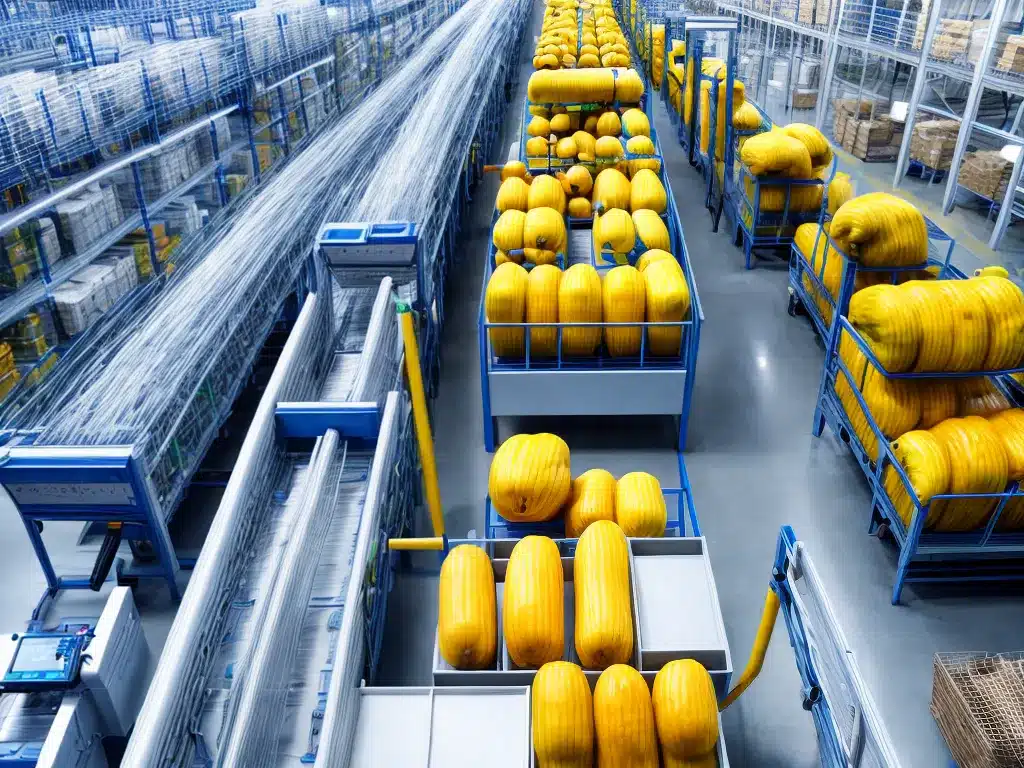How IoT Sensors Are Improving Food Supply Chains
The Internet of Things (IoT) is transforming food supply chains in profound ways. By connecting sensors, devices, and vehicles across the supply chain, companies gain unprecedented visibility into their operations. This enables better tracking, monitoring, and decision making to reduce food waste and improve food safety.
Monitoring Conditions Across the Supply Chain
IoT sensors allow companies to continuously monitor temperature, humidity, light exposure, and other conditions that impact food quality. Sensors placed in containers, trucks, warehouses, and stores can track these parameters in real time.
For example, fresh produce is highly perishable and sensitive to temperature changes. IoT sensors in refrigerated trucks can ensure optimal temperature is maintained from farm to store. Sensors on container ships monitor conditions to prevent spoilage during overseas transport. Smart packaging contains sensors that detect leaks, damage, and contamination.
By monitoring critical parameters at each step, companies can verify standards are met and quickly respond to any issues. This reduces spoilage and ensures consumers receive fresher, higher-quality products.
Improving Inventory Management
IoT technologies provide comprehensive visibility into inventory levels across the supply chain. Radio-frequency identification (RFID) tags attached to pallets and cases allow them to be tracked from packing to store delivery. This gives companies real-time inventory data rather than periodic manual counts.
Sensors also enable smart shelving that automatically tracks stock levels. Running out of inventory leads to food waste, so having real-time stock data allows stores to optimize ordering and reduce write-offs of expired products. IoT-enabled vending machines can even automatically order refills based on usage.
Overall, IoT enables data-driven inventory management that reduces waste and ensures availability of products.
Enhancing Food Safety
IoT plays a critical role in improving food safety by enabling better temperature control, traceability, and monitoring:
-
Temperature sensors ensure cold foods stay chilled and frozen foods remain frozen as they move through the supply chain. Keeping foods at proper temperatures inhibits bacterial growth.
-
Supply chain traceability allows companies to pinpoint the source of contaminated items and contain affected batches. Sensors provide data trails on a product’s full path through the chain.
-
Sensors can detect chemical and biological contaminants and alert companies before tainted products reach consumers. Smart packaging can indicate if a package was opened or food expired.
By enhancing traceability and quick detection of issues, IoT reduces the spread of foodborne illnesses. This is crucial for protecting public health.
The Future with IoT
IoT presents enormous opportunities to transform food supply chains through connectivity and data. With sensors becoming smaller and cheaper, adoption will accelerate. We can expect continued enhancements in:
-
End-to-end supply chain visibility – Sensors provide data on location and condition from farm to table.
-
Automation of inventory, transportation, and warehousing. IoT enables smart warehouses and self-driving delivery vehicles.
-
Food safety through rapid detection and containment of contamination risks.
-
Food waste reduction by optimizing inventory, transportation, and storage.
Overall, IoT enables food companies to leverage data to enhance operations, reduce waste, and provide safer, higher-quality food to consumers. Sensors and connectivity will be integral to building resilient and efficient supply chains.













